42 Pilsner Urquell
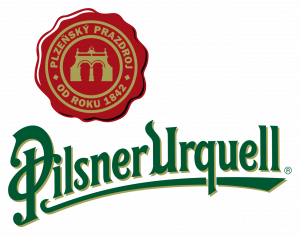
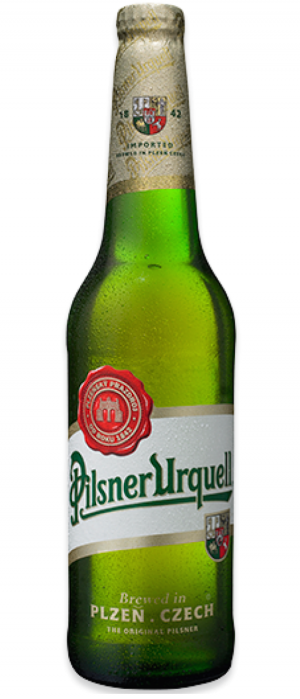
Introduction
Established in 1842, in the Czech Republic, Pilsner Urquell is the foundation for one of the most popular beers in the world. The townspeople of Pilsen brewed the beer that took the world by storm, forming the basis for what the world knows as Pilsner. The spread of Pilsner Urquell across Europe and later the world created a movement using this new beer type. Pilsner Urquell has been through the hardships that came with the World Wars but left better for it with the technology boom and the rebuilding that made it into a brewing superpower. Translating to Pilsner Original Source from German, Pilsner Urquell is now available in more than 50 countries worldwide (Plzeňský Prazdroj, 2020).
Origins
Established in the city of Pilsner in the Czech Republic in 1842, the citizens of Pilsen invested in a new brewery to create a lighter, bottom fermented ale rather than the top fermented ales that were popular at the time (Wikipedia, 2019). Josef Groll was hired to create the new beer coming from Burghers’ Brewery on October 5th, 1842, debuting it to the love of the people of Pilsen on November 11th, 1842 at the feast of St. Martin (Plzeňský Prazdroj, 2018).
In 1943, a Prague tailor named Jakub Pinkas received two buckets of the magical beer from his friend Martin Salzmann (Plzeňský Prazdroj, 2020). Loving its taste, he left his tailoring business and opened a pub serving the brew, a venture that was so popular it ended up taking over the business next door (Plzeňský Prazdroj, 2020).
Beginning to spread across Europe, the brew becomes popular in Vienna even having the brewery become the official supplier to the Imperial Court in 1856 (Plzeňský Prazdroj, 2020). Copycats began to appear forcing the trademark of “Pilsner Bier” in 1859 with the Pilsner Urquell trademark being filed in 1898 (Plzeňský Prazdroj, 2020).
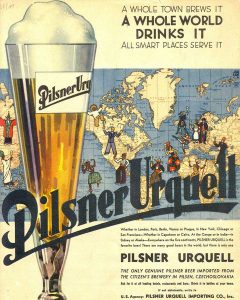
Exports to the new world began in 1873 with a growing demand in America forming and later exports going to Latin America, Africa and the Middle East (Plzeňský Prazdroj, 2020). Wartime however damaged the brand as their transports were seized and the product was boycotted as it was German with the brewery itself being destroyed in an Allied bombing on April 17th of 1945 (Plzeňský Prazdroj, 2020). From the ashes however a very modern brewery was built and the brewery that still stands is constantly received new technical innovations in the 1950s and 1960s (Plzeňský Prazdroj, 2020).
Key Milestones
- October 5th, 1842 Building of Burghers’ Brewery where Pilsner Urquell originated
- November 11th, 1842 Debut of Pilsner Urquell to the Townspeople of Pilsen
- April 1843 Pub Opened Serving Pilsner Urquell, this spread it to the masses
- 1856 Pilsner Urquell goes to Vienna, spreading to the Court of Austria, a massive victory for the company
- 1859 “Pilsner Bier” Trademark Filed
- 1873 First Export to the New World, Globalizing Pilsner Urquell
- 1887 Start of Bottling Beer, Better Preserving and Allowing for Better Transport
- 1889 Building of the Bottling Plant that runs for the next 70 years
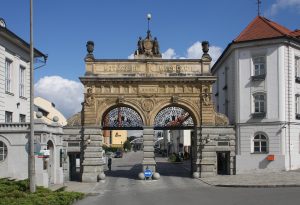
The Jubilee Gateway, Still Standing Today - 1892 50th Anniversary of Burghers’ Brewery and to Celebrate the Jubilee Gateway is built which still stands, Celebrating the Success of Pilsner Urquell
- 1895 Railway Cars are Bought to Transport Beer, Allowing for Better Transport of Beer
- 1898 Pilsner Urquell Trademark Filed, Creating the Brand we now know
- 1899 At the World Exhibition in Paris the Burghers’ Brewery presents its Model Refrigerated Beer Wagon, Allowing for Transporting Cold Beer from the Brewery to Towns across Europe for Immediate Consumption
- 1904-1907 Burghers’ Brewery Builds a Generator Station, Wells, a De-Ironing Plant and a Water Tower, Becoming Self Sufficient
- 1913 1 Million Hectolitres of Pilsner Produced, A Testament to its Success
- 1931 Burghers’ Brewery Goes Through a Complete Reconstruction of the Brewhouse, Improving their Facilities for Brewing
- 1939 Second World War Halts Growth of Burghers’ Brewery and Fleet Park is Confiscated by the German Reich
- 1939 U.S. Boycotts Pilsner Urquell and Exports only go to Germany, Cutting the Business Immensely
- April 17th, 1945 Brewery is Bombed and Destroyed by the Allies
- 1946 Brewery is Rebuilt with more Modern Technology for Better Brewing
- 1960 Modern Technical Innovations Applied to the Brewery for Better Brewing
- 1995 Pilsner Urquell Original Restaurant Opens
- 1999 Pilsner Urquell Joins SABMiller Group of Companies, Allowing for Better Distribution
- 2006 New Bottling Plant Opened
- 2008 Tours of the Brewery Begin
- October 2016 SABMiller is Bought by Anheuser-Busch InBev but due to Restrictions in Holdings Pilsner Urquell is to be Sold
- 2017 New Bottling Line goes into Effect
- March 2017 Pilsner Urquell Sold to Japanese Company, Asahi Breweries where it Remains today
Brewing Science and Industrialization
The Burghers Brewery, the brewery for Pilsner Urquell, was the original brewery for Pilsners and suitably suited with the technology of the time. At the creation of Pilsner Urquell, the development of English-style malt kilns allowed for the creation of the light and pale malt used in brewing malt (Rail, 2015).

Electricity improved the brewing process and this was introduced to the brewery in 1891 (Ensminger, 2011). Transport of beer using rail cars allowed for greater export of Pilsner Urquell. In 1899, refrigerated rail cars made their debut from the Pilsner Urquell brewery and by 1900 these cars were making runs from Pilsen to Vienna with refrigerated beer daily, ready for immediate consumption (Plzeňský Prazdroj, 2020).
1931 saw a reconstruction of the brewhouse where reinforced concrete storage silos were built, the brewhouse received a 50 m high chimney with an integrated heater and a automatic conveyor belts powered by an electric motor (Plzeňský Prazdroj, 2020). After the bombing of the brewhouse during World War II, the facilities that came from the ruins held the most advanced technology possible. The technology was continually updated throughout the next 80 years to allow for the greatest and best brewing possible (Plzeňský Prazdroj, 2020).
Beer Style

Pilsner Urquell is known for its unchanging recipe. Josef Groll, to compete with the top fermented lagers of the time, created a bottom-fermented lager (Wikipedia, 2019). At its creation, Pilsner Urquell was a much more mellow beer than others of the area (Ensminger, 2011). The new technology of the English-style malt kiln allowed for the extremely light and pale malt (Rail, 2015). The Golden Malt of Pilsner Urquell comes from the malt of the brew (Plzeňský Prazdroj, 2020). The alcohol content of Pislner Urquell is 4.4% with an IBU of 40 (Ensminger, 2011). Using quality ingredients, the aroma of Pilsner Urquell comes from the Czech malt grains while the caramel taste comes from the triple mashing process (Plzeňský Prazdroj, 2020). The Pilsen water softens the overall bitter flavour of the Saaz hops (Plzeňský Prazdroj, 2020). The Saaz hops are immediately granulated without contact with the air, preserving the bitterness of the hops (Plzeňský Prazdroj, 2020). The yeast used follows the recipe for a special brewers yeast, following the original recipe (Plzeňský Prazdroj, 2020).
World War I and World War II Era
Pilsner Urquell had spread globally before the first World War, being exported to 34 countries (Plzeňský Prazdroj, 2020). By 1913, more than 1 million hL of Pilsner Urquell were produced yearly in what was the largest brewery in Europe. The pressure of World War I, forced production to limit, reducing the output (Ensminger, 2011). The lack of ingredients and general war pressure forced these decreases. Between the two world wars, production would again increase but never to pre-war levels. The brewhouse was redesigned in 1931 to more modern standards.
World War II saw a halt to the growth of both Pilsen breweries. This halt came from pressure of the war and the influence of the German Reich (Plzeňský Prazdroj, 2020). The German Reich confiscated the fleet park of the brewery, the U.S. boycotted the product entirely, raw materials were scares and the only export went to Germany (Plzeňský Prazdroj, 2020). These methods saw a halt to the growth of Pilsner Urquell.
Following the Second World War, production began to increase again and exports would resume. However the goal of 1 million hL of Pilsner Urquell would not be reached again until 1996. These long terms effects saw an issue in development and industrialization of Pilsner Urquell.
Consolidation and Globalization
In 1942, the first Pilsner was presented in the Czech Republic and by the next year it had gone to Prague through a pub opened there (Plzeňský Prazdroj, 2020). In 1856, Pilsner managed to spread to Vienna, eventually being given to the Imperial Court (Plzeňský Prazdroj, 2020). In 1870, the First Joint-Stock Brewery was established in Pilsner as well, eventually conglomerating with Burghers Brewery. 1873 saw the first export to the New World in the form of export to the USA. By the next year, regular export to North America allowed for copy-cats to emerge in the breweries there (Plzeňský Prazdroj, 2020). By the end of the century exports were being made to Latin America, Africa and the Middle East as well.

Transport of beer using rail cars allowed for greater globalization. At the late 19th century, a massive amount of rail cars were used to transport beer. In 1899, refrigerated rail cars made their debut from the Pilsner Urquell brewery and by 1900 these cars were making runs from Pilsen to Vienna with refrigerated beer daily (Plzeňský Prazdroj, 2020). Before World War I, Pilsner Urquell was transported to 34 countries and come World War II this number dwindled due to a boycott of German Products. This number increased again World War II.
In 1999, Pilsner Urquell joins SABMiller Group of companies for better distribution. In October 2016 SABMiller is bought by Anheuser-Busch InBev but due to restrictions in holdings Pilsner Urquell is to be sold and in March 2017 Pilsner Urquell is sold to the Japanese Company, Asahi Breweries where it remains today.
Marketing and Branding
Pilsner Urquell branding focuses on the purity and originality of the beer it produces. Since its creation in 1842, Pilsner Urquell has focused on the unchanging, great taste of the beer with the original trademark being filed in 1859. The focus of this 2007 commercial show the emphasis of the brewery on their purity.
This award winning ad demonstrates the original story of the development and shows once again the quality of the brew, showing how they are truly the “Original Pilsner”. They truly focus on this on all their ad campaigns as this is how they have managed to stay a top brand.
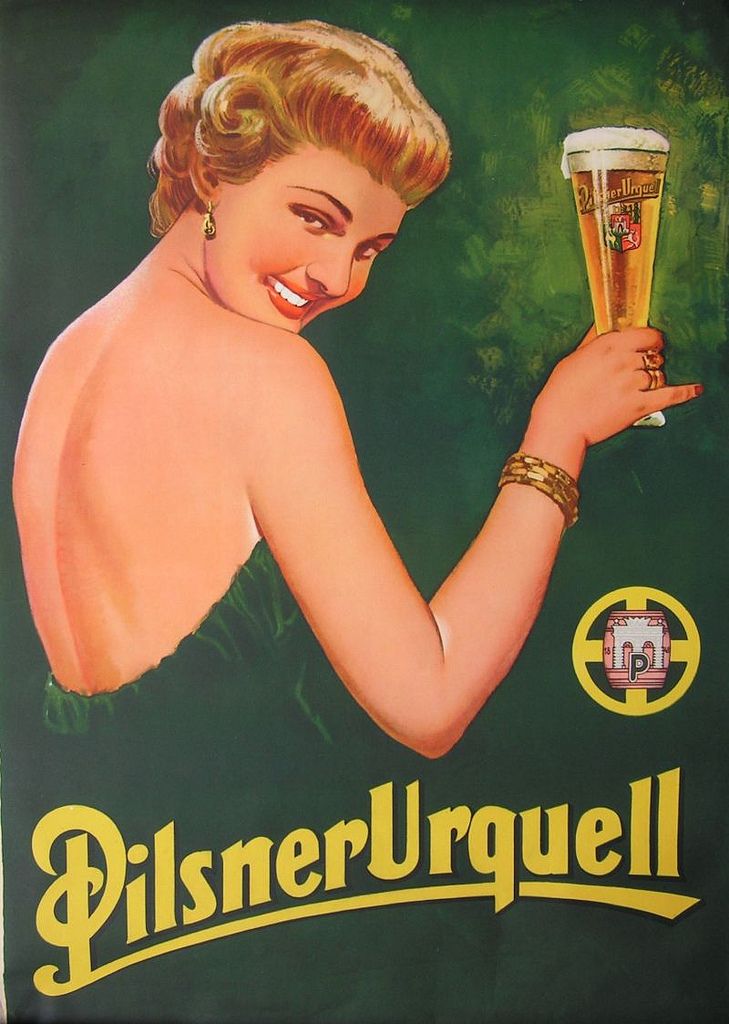
Early advertisements focus on the outlook that Pilsner Urquell was the original. Some later ads look at the spread of the beer through globalization. A few ads from the fifties had pretty women posing with bottles of Pilsner Urquell in traditional pin-up style.
Tours of the brewery have been offered since 2008, touring the brewing facilities, bottling plant and the brewery cellars along with a beer tasting (Visit Plzeňský Prazdroj, 2019). This allows them to tell the story of the brewery in what is one of the most popular tourist destinations in Pilsen (Visit Plzeňský Prazdroj, 2019).
Modern Era
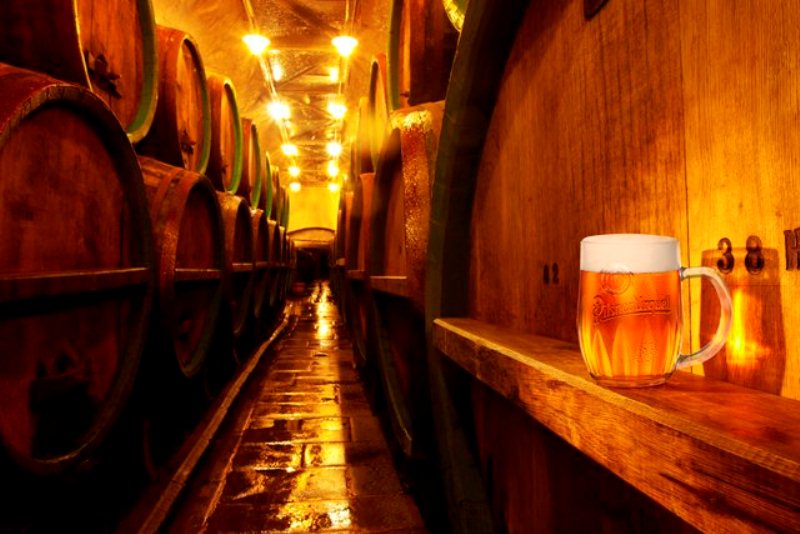
In the modern age, Pilsner Urquell has remained a powerhouse in the Pilsner brewing business. They remain a staple business in the town of Pilsen with the tours of the brewery running every day in multiple languages to accommodate as many as possible. They remain a Pilsen destination with the magnificent structure of the brewery being staple tourist destination. Additionally, providing a museum dedicated to the brewery methods of the past and Pilsner Urquell, a tour of the historic underground and a tour designed for schoolchildren. Every year 250, 000 tourists visit the tour to see the facilities, the museum and underground (Visit Pilsner, 2020).
The ingredients and water come from the area which helps Pilsner Urquell’s goal of remaining sustainable. They talk on their website about their focus on respecting nature, ethics, sustainable development and regional prosperity through continual development of their manufacturing and promotion of products (Plzeňský Prazdroj, 2020). They try to use natural resources while maintaining a constant overview of their environmental impact (Plzeňský Prazdroj, 2020).
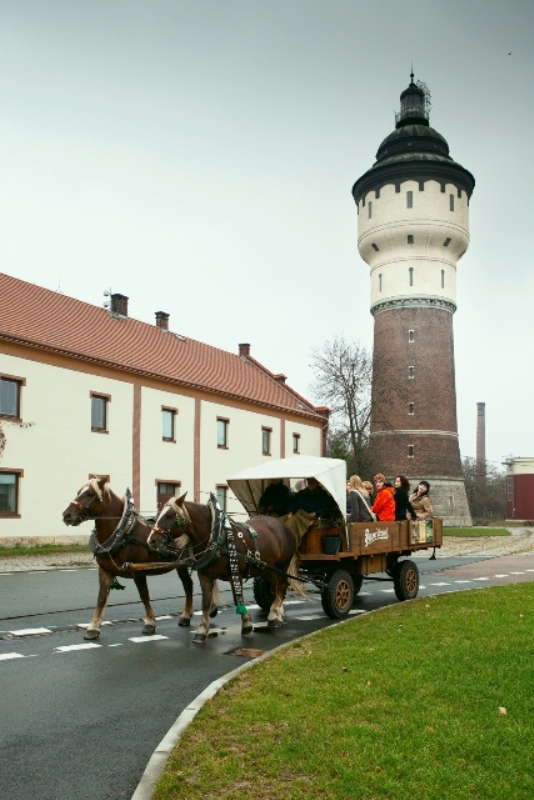
Through continuous upgrades since World War II, the brewery remains extremely modern with a new bottling plant being opened only two years ago, designed to bottle classic thirds and pints along with cans two deciliters to one liter (Plzeňský Prazdroj, 2020). They work to continually refine and expand their operations to produce a better product.
They focus additionally on safe drinking by having an age restriction of 18 at minimum on their websites. There are messages focusing on restricting drinking if one plans on driving and linking additionally to a safe drinking website.
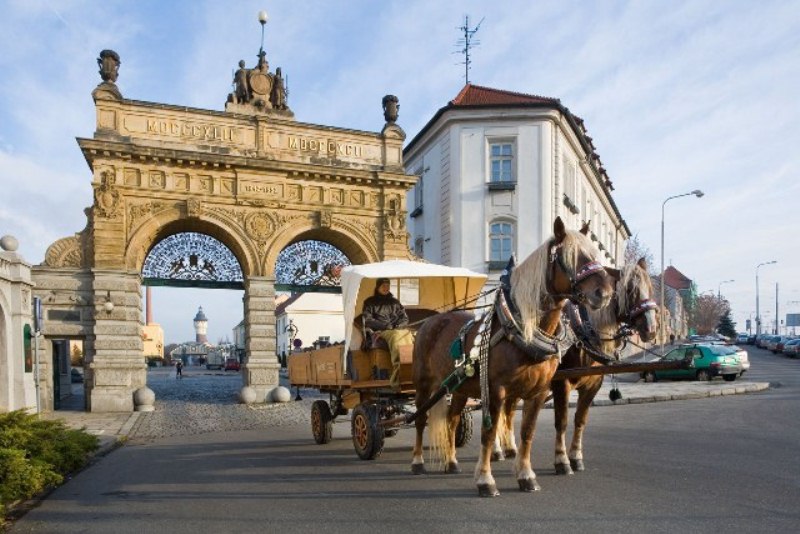
Their social media isn’t updated much but they remain active on their blog found through their website at https://www.prazdroj.cz/en/media. They remain active through their blog and through their training and restaurant initiatives. These serious updates focus on general updates on the state of the business itself including tax information and sale numbers. In the lighter side they post about to use their beer in cooking and how to pour it correctly, additionally operating training for their pourers. Their most recent posting being an issue of being unable to remain open during the COVID-19 crisis but the one before outlining their tax amounts for 2018.
References
Ensminger, P. A. (2011, January 30). The History and Brewing Methods of Pilsner Urquell. Retrieved from https://www.morebeer.com/articles/Pilsner_Urquell
Just Beer (n.d.). Pilsner Urquell. Retrieved from https://justbeerapp.com/beer/pilsner-urquell-1
Ludwig, Gerd (2019, March 12). Pilsner Urquell Commercial. Retrieved from https://www.youtube.com/watch?v=wZi6BsjYbXo
Picasso Pictures (2012, November 5). Pilsner Urquell – Book of Legends. Retrieved from https://www.youtube.com/watch?v=mNclBh27ruQ
Pinterest (n.d.). pilsner-urquell. Retrieved from https://www.pinterest.ca/pin/408912841148039140/?lp=true
Plzeňský Prazdroj (2020). The History of a Czech Legend. Retrieved from https://www.prazdroj.cz/en/our-story/history
Plzeňský Prazdroj (2020). Our Story. Retrieved from https://www.prazdroj.cz/en/our-story/
Plzeňský Prazdroj (2020). Czech Beer. Retrieved from https://www.prazdroj.cz/en/our- story/czech-beer
Plzeňský Prazdroj (2018). Pilsner Urquell. Retrieved from https://www.pilsnerurquell.com/de/
Plzeňský Prazdroj (2020). Media. Retrieved from https://www.prazdroj.cz/en/media
Plzeňský Prazdroj (2020). Responsibility. Retrieved from https://www.prazdroj.cz/en/responsibility
Rail, E. (2015, November 1). Pilsner Urquell: The Original Golden Lager. Retrieved from http://allaboutbeer.com/article/pilsner-urquell/
Visit Plzeňský Prazdroj (2019). Pilsner Urquell Brewery Tour. Retrieved from https://www.prazdrojvisit.cz/en/tours/pilsner-urquell-brewery-tour/
Visit Pilsner (2020). Brewery. Retrieved from https://www.pilsen.eu/tourist/visit/the-best-from- pilsen/brewery/brewery.aspx
Wikipedia (November 17, 2019). Pilsner Urquell. Retrieved from https://en.wikipedia.org/wiki/Pilsner_Urquell

